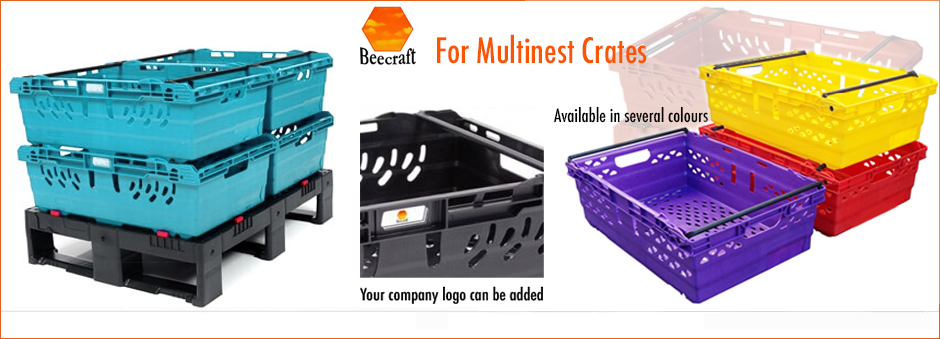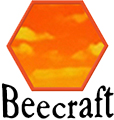Development of the Pallet



The pallet was originally developed in stages, with spacers being used in-between loads to allow fork entry. This process gradually progressed into placing boards atop stringers to create skids and then eventually fastening the boards to the bottom to create a pallet. This significant final enhancement, which appeared by 1925, resulted in the modern form of the pallet. With the addition of a bottom deck, several of the problems that were present with the single-faced skid were eliminated as weight could now be more evenly distributed, and the products being held were less likely to be damaged. They also provided improved stacking strength and rigidity. Lift-truck manufacturers began to promote the idea of using a more vertical plant area for stock storage. Pallet skids started out to be very narrow in order to facilitate passing through ordinary narrow doors, however, as warehouse facilities advanced, many oranisations began to build wider entry door. This enabled larger pallets to be used, which in turn reduced overall labour costs. The earliest referenced patent on a skid is in the U.S with Hallowell’s 1924 “Lift Truck Platform” and in 1939, in Carl Clark patented a recognizably modern pallet; however, this was made with steel stringers. Robert Braun established the first four-direction pallet in 1945 and by the end of 1948, Sullivan Stemple had claimed the basic idea of a pallet designed to be used with a fork lift; the pallet was stamped from steel. During World War II, material handling of pallets were greatly improved in order to quickly and efficiently transfer war materials to allies and in order to reduce the resupply time of warships. Following the war, many more patents were established as inventors began to patent what they had invented during the war effort. The first completely modern two-directional stringer pallet was designed by Darling Graeme in 1949, the same year the first modern disposable four-way block pallet was developed and patented by Norman Cahners, a U.S Navy Supply Officer.
Impact of pallets on rail transport: Pallets and forklifts provided a much quicker turnaround with regards to the delivery of rail cars and ships due to their efficiency. Whilst it used to take three days to unload a boxcar containing 13000 cases of un-palletised canned goods, with the use of pallets and skids, loading the same amount of good into railway trucks took a mere four hours. With the entry of the U.S in World War II, there was a high urgency for a material handling reform, and this occurred almost overnight. Palletization was regarded as an enormous opportunity to help the U.S Armed Forces to achieve more using less time and resources. Palletized loads could carry more goods whilst needing fewer workers, thereby freeing up men for military duty; they also increased warehouse storage capacity which left more space for the storage of other items.
Standardization and regulation: Dimensions (mm) Dimensions (inches) Wasted floor, ISO Container Region 1219 x 1016 48.00 x 40.00 3.7% North America 1200 x 1000 47.24 x 39.37 6.7% Europe, Asia; similar to 48 × 40″. 1140 x 1140 44.88 x 44.88 8.1% Australia 1067 x 1067 42.00 x 42.00 11.5% North America, Europe, Asia 1100 x 1100 43.30 x 43.30 14% Asia 1200 x 800 47.24 x 31.50 15.2% Europe; fits many doorways.
North American pallets: Out of all the pallets used in North America, the most commonly used one is the Grocery Manufacturers’ Association (GMA) pallet, which accounts for 30% of all new wood pallets produced in the U.S. The ISO also recognises the GMA pallet footprint as one of its six standard sizes.
Dimensions (mm) Dimensions (in.) Production Rank Industries Using: 1219 x 1016 48 x 40 1 Grocery, many others 1067 x 1067 42 x 42 2 Telecommunications, Paint 1219 x 1219 48 x 48 3 Drums 1016 x 1219 40 x 48 4 Military[11], Cement1219 x 1067 48 x 42 5 Chemical, Beverage 1016 x 1016 40 x 40 6 Dairy 1219 x 1143 48 x 45 7 Automotive 1118 x 1118 44 x 44 8 Drums, Chemical 914 x 914 36 x 36 9 Beverage 1219 x 914 48 x 36 10 Beverage, Shingles, Packaged Paper 889 x 1156 35 x 45.5 Unknown Military 1/2 ISO container fits 36″ standard doors. [12] 1219 x 508 48 x 20 Unknown Retail[13]



